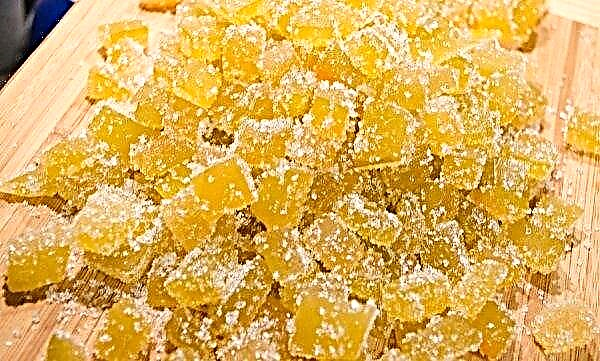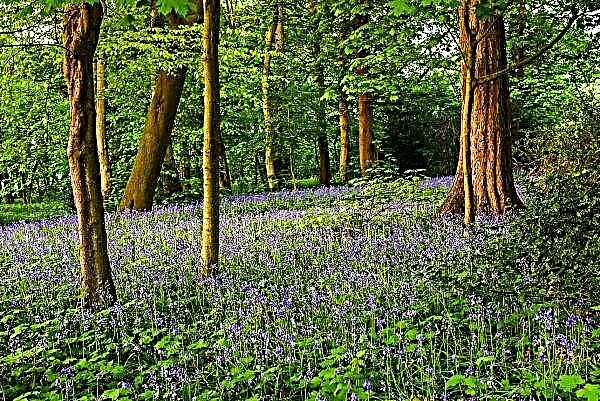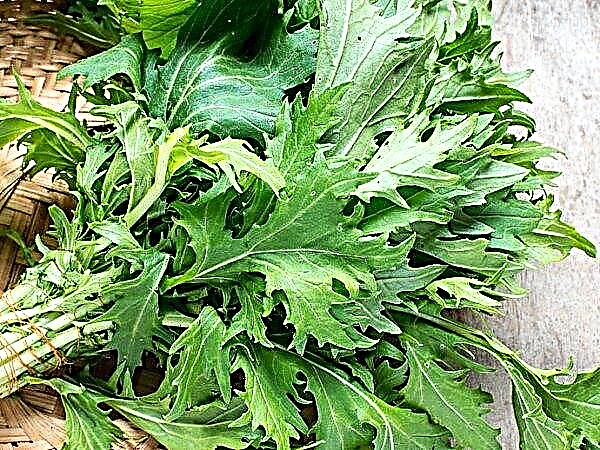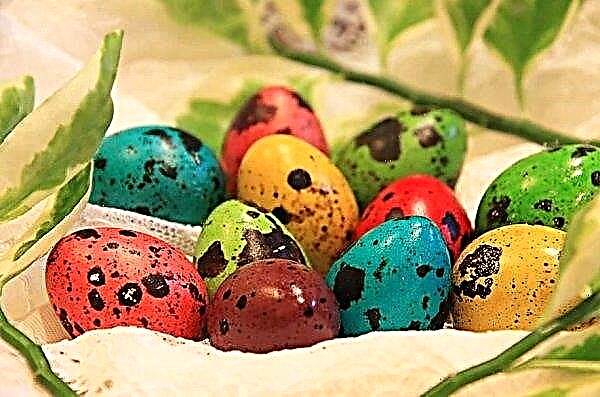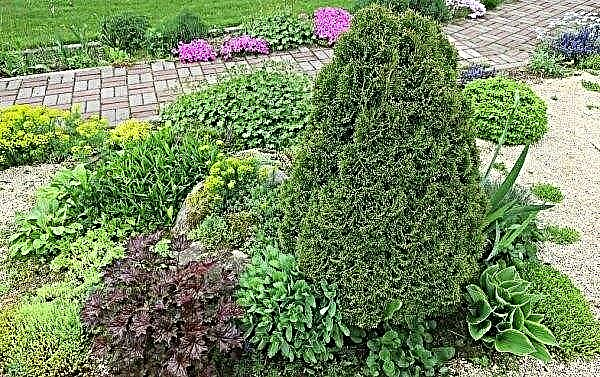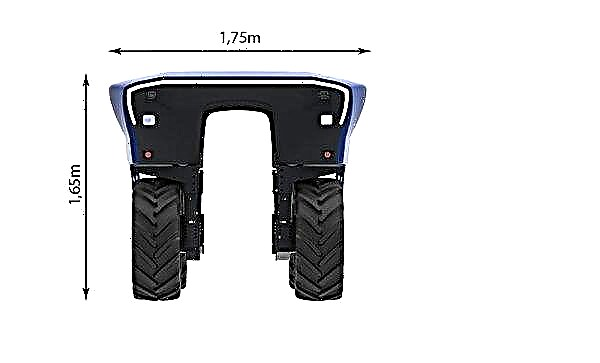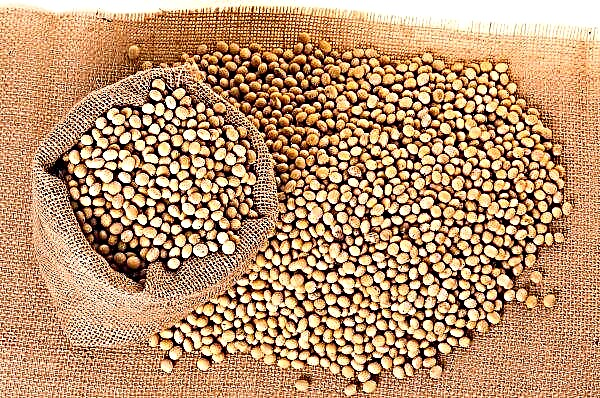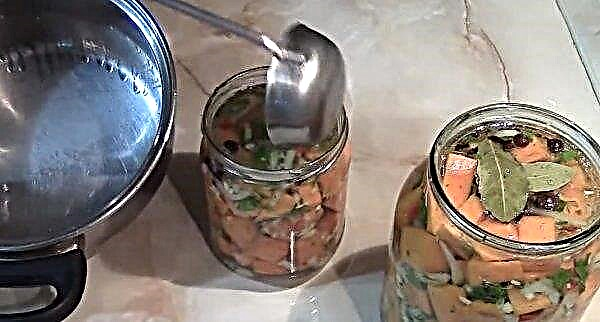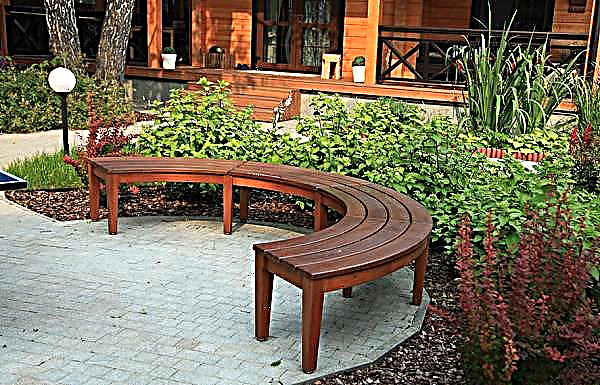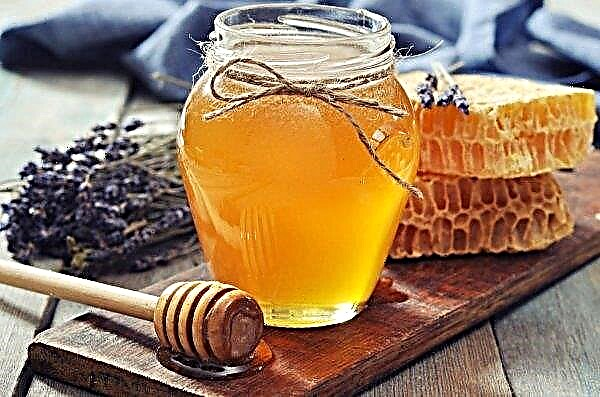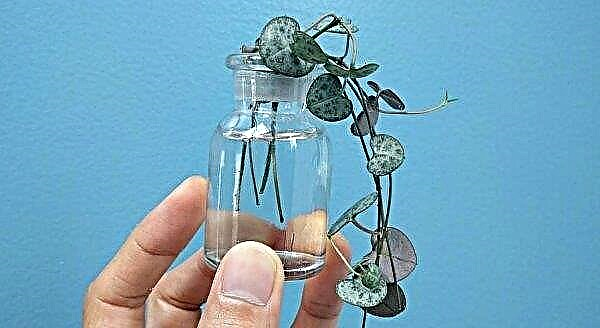An edible variety of honeysuckle Nymph perfectly adapts to cold humid climates. The vegetation has a decorative look, and the crop has excellent taste. To get good results when cultivating a crop, you should study in detail its botanical description and the rules of agricultural technology.
Description of the honeysuckle variety Nymph
Previously, honeysuckle was grown only in Siberia, in the Urals and the Far East - in its natural conditions of growth. But with the development of selection, new varieties began to appear that can be cultivated in almost any climatic condition. These include the culture in question.

Selection history
The nymph belongs to the species of blue honeysuckle, which combines edible varieties. The selection was carried out at the Pavlovsk Research Institute of Plant Production named after N. I. Vavilova. The originators of the variety are M. Plekhanova and A. V. Kondrikova. The culture was obtained in 1992 as a result of free pollination of the Leningrad giant by pollen of several varieties. It was included in the State Register in 1998 and is recommended for cultivation in any climatic zones.
Did you know? The name “honeysuckle” combines two abbreviated words - “life” and “youth”.
Appearance, characteristics of berries, ripening time, yield
Characteristics and botanical features of the culture:
- the bushes are tall, up to 2.5 m, while the breadth does not grow, and occupy a fairly small area;
- young shoots are thick, powerful, green, pubescent, old - woody, with flaky bark, brownish-sand;
- the foliage is dense, large, lanceolate, green;
- bell-shaped flowers of off-white color are formed in the leaf sinuses, 2 pieces are collected;
- ripening period - medium early, depending on climate conditions (mid - end of June);
- vegetation gives the first crop 3 years after planting;
- berries on the bushes are kept tight enough, do not crumble with gusts of wind;
- the fruits are colored blue, covered with a gray waxy coating;
- the shape of the berries is fusiform, the weight of one instance varies between 0.8-1.1 g;
- the ability to bear fruit is preserved throughout the entire life cycle of vegetation, which can be 30–50 years;
- the yield is higher than that of similar crops, and with industrial cultivation is 37 kg / ha, in private households - 1.5–2 kg per plant;
- the frost resistance of the bushes is high - they can winter without shelter at -50 ° C, the flowers tolerate return frosts to -7 ° C;
- Plants show increased resistance to diseases and pests, and aphids occasionally attack them.

Particularly noteworthy are the characteristics of the fruit. A distinctive feature of Nymph berries is a sweet taste, the sugar content in them reaches 9%, while in other edible varieties, acid predominates. Honeysuckle fruits are very healthy. They include a number of vitamins and minerals necessary for the full functioning of the human body:
- riboflavin;
- thiamine;
- vitamin C;
- phylloquinone;
- beta carotene;
- potassium;
- calcium;
- sodium;
- phosphorus;
- magnesium;
- iron.

Advantages and disadvantages of the variety
Before you start cultivating this plant, you should evaluate its advantages and disadvantages. This will help to organize the subsequent care more correctly.
- Grade advantages:
- high frost resistance;
- the possibility of using berries in commercial activities;
- high, stable productivity;
- long life cycle of plants with the ability to bear fruit;
- increased resistance to diseases and pests;
- good adaptability to various climatic conditions.
- Cons of the variety:
- crop self-fertility (does not bear fruit without a pollinator plant);
- exactingness to soil moisture level.
Agricultural technology
It is not at all difficult to grow the culture in question. The main thing is to choose the right place for her on the site and observe the basic rules of agricultural technology.
Did you know? Honeysuckle fruits help remove heavy metal salts and radionuclides from the body.
Seat selection
First of all, the gardener must decide on a place to grow the crop. It is worth considering that the vegetation is perennial, and plantings will occupy a specific area for at least 30 years. For the full development and fruiting of honeysuckle you need good lighting (landing in partial shade is allowed). Groundwater should be located not lower than 1.5 m. There are no special requirements regarding soil quality, but vegetation develops better on well-aerated, light and medium density soils.
Soil preparation is carried out six months before planting. At this stage, it is dug up to a depth of 40 cm, then a 3% solution of copper sulfate is treated at the rate of 1 liter of liquid per 10 m². A week later, under repeated digging to a depth of 20 cm, 10 kg of sand, 10 kg of peat, 20 kg of manure are applied per square meter. A week before planting, the soil must again be dug up to a depth of 20 cm.
Important! Do not plant honeysuckle next to birches. White-stemmed trees strongly drain the soil, which will negatively affect the development of berry culture.
Landing and care
Honeysuckle landing is best done from mid-September to mid-October. The planting scheme involves the arrangement of bushes at a distance of 2 m from each other and a pitch between rows of 3 m.In a row of plants, it is better to alternate, that is, plant a Nymph seedling, and after 2 m - a pollinator.
Step-by-step landing process:
- Dig a hole 40 cm deep.
- Pour 5 liters of water into it.
- Mix soil from the pit with 10 kg of compost and 10 kg of sand.
- Fill the hole with soil a third.
- Form a mound in the center of the pit.
- Powder the roots of seedlings with wood ash.
- Install the seedling in the pit, align so that the root neck is flush with the soil after it is filled.
- Fill the hole with soil, tighten the trunk circle, fill with 5 liters of water.
- After absorbing moisture, close the trunk circle with a layer of compost.

Multiplicity of irrigation depends on climatic conditions. In areas with a temperate climate and sufficient rainfall, humidification can be carried out only 4 times a season, when the dry period begins, the frequency of irrigation increases, as does the amount of liquid applied under one plant (12 liters of water per bush). In the southern regions, watering should be carried out weekly at 8-10 liters per square meter of soil.
Top dressing begins to be introduced from 3 years of plant life on the site. Once a season, in the spring, before the buds swell, 1 bucket of compost diluted with water (1: 1) is added to each bush. The next year, after the first feeding, instead of organics, 20 g of potassium salt, 50 g of sodium nitrate, 40 g of superphosphate are used for each bush. Annually alternating the introduction of organics and mineral components. During the season, during irrigation, 1 or 2 times you can add 300 g of wood ash per bush to the water for irrigation.
After precipitation and planned watering, it is necessary to mulch the soil. This can be done with compost, freshly cut grass or gravel. Such an event is necessary to maintain optimal soil moisture and to prevent weed growth. Loosening should be carried out as rarely as possible, since the roots of the plants are located in the upper layers of the soil. The depth of penetration into the soil during weeding should not exceed 7 cm.
Pollination Features
If you don’t plant a pollinator near Nymph shrubs, you can’t expect a good harvest. It refers to self-infertile varieties. The best for cross-pollination are varieties of the Leningrad giant and the Kamchatka honeysuckle.
Pest and Disease Control
During the existence of the variety, there was no information about disease infection. For preventive purposes, this plant is not sprayed. Occasionally, bushes can be attacked by pests such as aphids and leafworms. In case of occurrence of these parasites, the Fitoverm plantings are treated according to the instructions on the package or dusted on the sheet and soil with wood ash.
Important! After trimming, all sections on the bushes must be treated with wood ash and covered with garden varnish so that infection does not get into the wound surfaces.
Cropping and shaping the crown
Honeysuckle requires only sanitary pruning; crown formation is not performed for this type of plant. They begin to carry out from the third year after planting, in the fall. First of all, the branches growing in the immediate vicinity of the soil are removed, then the thickening crown and broken ones are removed. Once every 10 years, anti-aging pruning is performed, removing branches that do not give fruit.
Wintering
For winter, the bushes of this variety do not need to be covered. But it is imperative to conduct pre-winter training, which consists in the following:
- water-loading irrigation, 20 liters of water per square meter, in mid-September - early October;
- mulching soil with compost to a height of 5 cm.
Harvesting and transportation of the crop, shelf life of berries
Harvesting can begin a week after the berries begin to turn blue. The easiest way is to spread the film under the bushes and shake them. The remaining berries are removed manually. Harvest immediately sorted, discarding damaged fruits. Lay the berries in one layer in small containers lined with paper. In the refrigerator, ripe fruits remain fresh for no more than 3 days. If you plan to use the crop in commercial activities, then it should be transported immediately after harvesting. To extend the shelf life, it is better to freeze the berries or send them for processing. Berries can be used to make jams, preserves, a variety of tinctures and liquors.
To extend the shelf life, it is better to freeze the berries or send them for processing. Berries can be used to make jams, preserves, a variety of tinctures and liquors.
The fruit and berry shrub of the honeysuckle Nymph is well established in various climatic zones, due to which I have collected many positive reviews from gardeners. It is promising not only for personal cultivation in personal plots, but also on an industrial scale.
Reviews
A variety with excellent taste. There is piquant bitterness, it is light, the taste is sweet. The berries are large, it is very convenient to collect them, as if tearing in bunches. The bush is small, the crop did not weigh.

